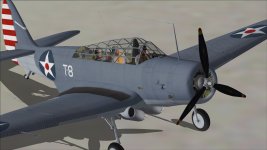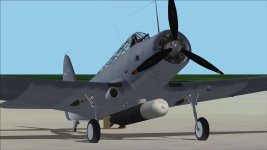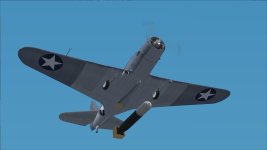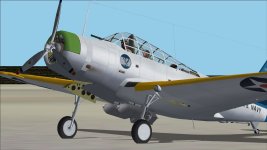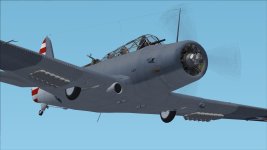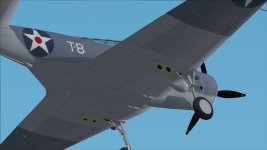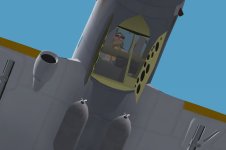-
There seems to be an uptick in Political comments in recent months. Those of us who are long time members of the site know that Political and Religious content has been banned for years. Nothing has changed. Please leave all political and religious comments out of the forums.
If you recently joined the forums you were not presented with this restriction in the terms of service. This was due to a conversion error when we went from vBulletin to Xenforo. We have updated our terms of service to reflect these corrections.
Please note any post refering to a politician will be considered political even if it is intended to be humor. Our experience is these topics have a way of dividing the forums and causing deep resentment among members. It is a poison to the community. We appreciate compliance with the rules.
The Staff of SOH
You are using an out of date browser. It may not display this or other websites correctly.
You should upgrade or use an alternative browser.
You should upgrade or use an alternative browser.
Douglas TBD-1 Devastators released
- Thread starter Captain Kurt
- Start date
Douglas TBD-1 Devastator VT-2

A new entry has been added to Add-Ons Library, category CFS 2 Aircraft - American
Description: Douglas TBD-1 Devastator
Unit: VT-2 USS Lexington (CV-2) May 7, 1942
Pilot: Ensign C. Hamilton, USN.
When it entered service in 1937, the Douglas TBD-1 was one of the most advanced aircraft in the world, but by 1941 it had become obsolete, too slow, under armored and hobbled with the dysfunctional Mk XII torpedo which rarely worked. It was still in frontline service in 1941 when Japan attacked Pearl Harbor and the US Navy had to fight with what it had left until the new TBF Avenger could be delivered to replace the Devastator. The TBD fought valiantly for the first 6 months of the war. It was used in the first hit and run fast carrier raids on Wake, Marcus, Gilberts, Tulagi and New Guinea.
During the Battle of the Coral Sea, The TBDs of VT-2 and VT-5 were primarily responsible for sinking the first Japanese carrier to be lost, making 7 torpedo hits against the IJN SHOHO.
This aircraft depicts one of the VT-2 aircraft, numbered T-8 , that was credited with a torpedo hit on the SHOHO. T-8 went down with the Lexington (CV-2) when she was sunk the following day. In 2018, the Paul G. Allen Expedition in the RV Petrel deep sea exploration ship, located the sunken Lexington at a depth of more than 2 miles taking many documentary photos. The aircraft on her deck, including T-8 are remarkably well preserved as seen in the photograph.
One month later, June 4 1942 at Midway the 41 Devastators of the Hornet (VT-8), the Yorktown (VT-3) and the Enterprise (VT-6) were launched against the 4 Japanese carriers of the Midway invasion task force. Poor coordination, poor tactics and confusion led to the 3 TBD squadrons attacking individually without coordination with each other or with the dive bomber squadrons. This gave the Japanese Combat Air Patrol Zero's plenty of time to shoot them down in detail. Only 4 TBDs made it back to the Enterprise, and 2 others to the Yorktown. VT-8 from the Hornet was completely destroyed. But the TBD crew's sacrifice drew the Japanese CAP down to sea level and opened the way for the US Navy SBD dive bombers to arrive unopposed and attack, sinking 3 of the Japanese carriers. The fourth Japanese carrier was sunk during a second strike but no TBDs were left to take part in the second strike. The few TBDs still in service were immediately withdrawn from the front lines to stateside training commands and by 1944 all had been scrapped. No example remains today.
Credits
Captain Kurt: Aircraft model, US Naval ordinance bombs, bomb racks, Mk XIII torpedo, torpedo rack, VC, paint textures, panel, and .dp file.
Shessi: Pilot figure
Kelticheart: Prop blurred texture
BeePee: compass gauge
Microsoft: Gauges and .air file
To install copy into your main microsoft games\Combat flight Simulator2\AIRCRAFT folder. Copy the gauges into the Combat flight simulator2\GAUGES folder. Copy the Objects_dp folder to the Combat flight simulator2\OBJECTS_DP folder. Copy the SCENEDB folder to the Combat flight simulator2\SCENEDB folder.
ANIMATION CONTROLS (stock assignments)
Wing Fold Open/Close: Shift W
Tail Hook: Shift H
Canopy Open/Close : Shift C
Cowl Flaps Open: Shift E
Cowl Flaps Close: Cntrl E
Bomb Aim Bay Doors Open/Close: D
Flaps (engine must be running) Down: F
Flaps Retract: V
Gunner rear canopy opens and gunner raises gun when gear is retracted: G
Bombardier and Norden bomb sight appear when guns only or a bomb load out is selected.
Bombardier and Norden bomb sight disappear when a torpedo load out is selected.
Belly panel types swap out between bomb and torpedo load outs and when wings fold.
To check it out, rate it or add comments, visit Douglas TBD-1 Devastator VT-2
The comments you make there will appear in the posts below.

A new entry has been added to Add-Ons Library, category CFS 2 Aircraft - American
Description: Douglas TBD-1 Devastator
Unit: VT-2 USS Lexington (CV-2) May 7, 1942
Pilot: Ensign C. Hamilton, USN.
When it entered service in 1937, the Douglas TBD-1 was one of the most advanced aircraft in the world, but by 1941 it had become obsolete, too slow, under armored and hobbled with the dysfunctional Mk XII torpedo which rarely worked. It was still in frontline service in 1941 when Japan attacked Pearl Harbor and the US Navy had to fight with what it had left until the new TBF Avenger could be delivered to replace the Devastator. The TBD fought valiantly for the first 6 months of the war. It was used in the first hit and run fast carrier raids on Wake, Marcus, Gilberts, Tulagi and New Guinea.
During the Battle of the Coral Sea, The TBDs of VT-2 and VT-5 were primarily responsible for sinking the first Japanese carrier to be lost, making 7 torpedo hits against the IJN SHOHO.
This aircraft depicts one of the VT-2 aircraft, numbered T-8 , that was credited with a torpedo hit on the SHOHO. T-8 went down with the Lexington (CV-2) when she was sunk the following day. In 2018, the Paul G. Allen Expedition in the RV Petrel deep sea exploration ship, located the sunken Lexington at a depth of more than 2 miles taking many documentary photos. The aircraft on her deck, including T-8 are remarkably well preserved as seen in the photograph.
One month later, June 4 1942 at Midway the 41 Devastators of the Hornet (VT-8), the Yorktown (VT-3) and the Enterprise (VT-6) were launched against the 4 Japanese carriers of the Midway invasion task force. Poor coordination, poor tactics and confusion led to the 3 TBD squadrons attacking individually without coordination with each other or with the dive bomber squadrons. This gave the Japanese Combat Air Patrol Zero's plenty of time to shoot them down in detail. Only 4 TBDs made it back to the Enterprise, and 2 others to the Yorktown. VT-8 from the Hornet was completely destroyed. But the TBD crew's sacrifice drew the Japanese CAP down to sea level and opened the way for the US Navy SBD dive bombers to arrive unopposed and attack, sinking 3 of the Japanese carriers. The fourth Japanese carrier was sunk during a second strike but no TBDs were left to take part in the second strike. The few TBDs still in service were immediately withdrawn from the front lines to stateside training commands and by 1944 all had been scrapped. No example remains today.
Credits
Captain Kurt: Aircraft model, US Naval ordinance bombs, bomb racks, Mk XIII torpedo, torpedo rack, VC, paint textures, panel, and .dp file.
Shessi: Pilot figure
Kelticheart: Prop blurred texture
BeePee: compass gauge
Microsoft: Gauges and .air file
To install copy into your main microsoft games\Combat flight Simulator2\AIRCRAFT folder. Copy the gauges into the Combat flight simulator2\GAUGES folder. Copy the Objects_dp folder to the Combat flight simulator2\OBJECTS_DP folder. Copy the SCENEDB folder to the Combat flight simulator2\SCENEDB folder.
ANIMATION CONTROLS (stock assignments)
Wing Fold Open/Close: Shift W
Tail Hook: Shift H
Canopy Open/Close : Shift C
Cowl Flaps Open: Shift E
Cowl Flaps Close: Cntrl E
Bomb Aim Bay Doors Open/Close: D
Flaps (engine must be running) Down: F
Flaps Retract: V
Gunner rear canopy opens and gunner raises gun when gear is retracted: G
Bombardier and Norden bomb sight appear when guns only or a bomb load out is selected.
Bombardier and Norden bomb sight disappear when a torpedo load out is selected.
Belly panel types swap out between bomb and torpedo load outs and when wings fold.
To check it out, rate it or add comments, visit Douglas TBD-1 Devastator VT-2
The comments you make there will appear in the posts below.
Douglas TBD-1 Devastator VT-6

A new entry has been added to Add-Ons Library, category CFS 2 Aircraft - American
Description: Douglas TBD-1 Devastator
Unit: VT-6 USS Enterprise (CV-6) 1938
Pilot: unknown
When it entered service in 1937, the Douglas TBD-1 was one of the most advanced aircraft in the world. At that time, the TBD was deemed to be the most advanced aircraft of its kind anywhere in the World. The Devastator marked a large number of `firsts’ for the US Navy. It was the first widely used carrier-based monoplane as well as the first all-metal naval aircraft, the first with a totally enclosed cockpit, the first with power-actuated (hydraulically) folding wings and in these respects the TBD was revolutionary. A semi-retractable landing gear was fitted, with the wheels designed to protrude 10in below the wings to permit a `wheels up’ landing which might limit damage to the aircraft. A crew of three was normally carried beneath a large `greenhouse’ canopy almost half the length of the aircraft.
HIs model depicts TBD-1 BuAer number 0344 which was received by VT-6 being formed commensurate with the USS Enterprise being commissioned. After later being transferred to VT-5, it would be lost at sea on April 21, 1941. The pilot Ens. D.D. Whyte, and Bombardier ACOM A.L. Christensen were killed. The gunner, Sea2c M.S. Starcevich survived.
But by 1941 the TBD had become obsolete, too slow, under armored and hobbled with the dysfunctional Mk XII torpedo which rarely worked. It was still in frontline service in 1941 when Japan attacked Pearl Harbor and the US Navy had to fight with what it had left until the new TBF Avenger could be delivered to replace the Devastator. The TBD fought valiantly for the first 6 months of the war, especially in the Battle of the Coral Sea and the Battle of Midway where most of the remaining TBD's in service were wiped out.
Credits
Captain Kurt: Aircraft model, US Naval ordinance bombs, bomb racks, Mk XIII torpedo, torpedo rack, VC, paint textures, panel, and .dp file.
Shessi: Pilot figure
Kelticheart: Prop blurred texture
BeePee: Compass gauge
Microsoft: Gauges and .air file
To install copy into your main microsoft games\Combat flight Simulator2\AIRCRAFT folder. Copy the gauges into the Combat flight simulator2\GAUGES folder. Copy the Objects_dp folder to the Combat flight simulator2\OBJECTS_DP folder. Copy the SCENEDB folder to the Combat flight simulator2\SCENEDB folder.
ANIMATION CONTROLS (stock assignments)
Wing Fold Open/Close: Shift W
Tail Hook: Shift H
Canopy Open/Close : Shift C
Cowl Flaps Open: Shift E
Cowl Flaps Close: Cntrl E
Bomb Aim Bay Doors Open/Close: D
Flaps (engine must be running) Down: F
Flaps Retract: V
Gunner rear canopy opens and gunner raises gun when gear is retracted: G
Bombardier and Norden bomb sight appear when guns only or a bomb load out is selected.
Bombardier and Norden bomb sight disappear when a torpedo load out is selected.
Belly panel types swap out between bomb and torpedo load outs and when wings fold.
To check it out, rate it or add comments, visit Douglas TBD-1 Devastator VT-6
The comments you make there will appear in the posts below.

A new entry has been added to Add-Ons Library, category CFS 2 Aircraft - American
Description: Douglas TBD-1 Devastator
Unit: VT-6 USS Enterprise (CV-6) 1938
Pilot: unknown
When it entered service in 1937, the Douglas TBD-1 was one of the most advanced aircraft in the world. At that time, the TBD was deemed to be the most advanced aircraft of its kind anywhere in the World. The Devastator marked a large number of `firsts’ for the US Navy. It was the first widely used carrier-based monoplane as well as the first all-metal naval aircraft, the first with a totally enclosed cockpit, the first with power-actuated (hydraulically) folding wings and in these respects the TBD was revolutionary. A semi-retractable landing gear was fitted, with the wheels designed to protrude 10in below the wings to permit a `wheels up’ landing which might limit damage to the aircraft. A crew of three was normally carried beneath a large `greenhouse’ canopy almost half the length of the aircraft.
HIs model depicts TBD-1 BuAer number 0344 which was received by VT-6 being formed commensurate with the USS Enterprise being commissioned. After later being transferred to VT-5, it would be lost at sea on April 21, 1941. The pilot Ens. D.D. Whyte, and Bombardier ACOM A.L. Christensen were killed. The gunner, Sea2c M.S. Starcevich survived.
But by 1941 the TBD had become obsolete, too slow, under armored and hobbled with the dysfunctional Mk XII torpedo which rarely worked. It was still in frontline service in 1941 when Japan attacked Pearl Harbor and the US Navy had to fight with what it had left until the new TBF Avenger could be delivered to replace the Devastator. The TBD fought valiantly for the first 6 months of the war, especially in the Battle of the Coral Sea and the Battle of Midway where most of the remaining TBD's in service were wiped out.
Credits
Captain Kurt: Aircraft model, US Naval ordinance bombs, bomb racks, Mk XIII torpedo, torpedo rack, VC, paint textures, panel, and .dp file.
Shessi: Pilot figure
Kelticheart: Prop blurred texture
BeePee: Compass gauge
Microsoft: Gauges and .air file
To install copy into your main microsoft games\Combat flight Simulator2\AIRCRAFT folder. Copy the gauges into the Combat flight simulator2\GAUGES folder. Copy the Objects_dp folder to the Combat flight simulator2\OBJECTS_DP folder. Copy the SCENEDB folder to the Combat flight simulator2\SCENEDB folder.
ANIMATION CONTROLS (stock assignments)
Wing Fold Open/Close: Shift W
Tail Hook: Shift H
Canopy Open/Close : Shift C
Cowl Flaps Open: Shift E
Cowl Flaps Close: Cntrl E
Bomb Aim Bay Doors Open/Close: D
Flaps (engine must be running) Down: F
Flaps Retract: V
Gunner rear canopy opens and gunner raises gun when gear is retracted: G
Bombardier and Norden bomb sight appear when guns only or a bomb load out is selected.
Bombardier and Norden bomb sight disappear when a torpedo load out is selected.
Belly panel types swap out between bomb and torpedo load outs and when wings fold.
To check it out, rate it or add comments, visit Douglas TBD-1 Devastator VT-6
The comments you make there will appear in the posts below.
Douglas TBD-1 Devastator VT-8

A new entry has been added to Add-Ons Library, category CFS 2 Aircraft - American
Description: Douglas TBD-1 Devastator
Unit: VT-8 USS Hornet (CV-8) June 4, 1942
Pilot: Lt. Commander John Charles Waldron, USN.
When it entered service in 1937, the Douglas TBD-1 was one of the most advanced aircraft in the world, but by 1941 it had become obsolete, too slow, under armored and hobbled with the dysfunctional Mk XII torpedo which rarely worked. It was still in frontline service in 1941 when Japan attacked Pearl Harbor and the US Navy had to fight with what it had left until the new TBF Avenger could be delivered to replace the Devastator. The TBD fought valiantly for the first 6 months of the war. It was used in the first hit and run fast carrier raids on Wake, Marcus, Gilberts, Tulagi and New Guinea.
During the Battle of the Coral Sea, The TBDs of VT-2 and VT-5 were primarily responsible for sinking the first Japanese carrier to be lost, making 7 torpedo hits against the IJN SHOHO.
One month later, based on US Intelligence reports, the US Navy gathered the US carriers Enterprise, Yorktown and Hornet north of Midway Island to ambush a Japanese invasion force with four aircraft carriers headed to Midway Island. The TBD pilots and crewmen were well aware that they had little chance of surviving with their obsolete planes, but stepped up to the task with courage anyway. Several days before the Midway battle the CO of VT-8, Lt. Commander Waldron ordered the single rear seat machine gun to be replaced with a twin gun mount to hopefully improve his gunner crew's chances of fighting off fighter attacks. This model depicts Lt. Commander Waldron’s aircraft, T-16 with its twin gun installation taking off for the Midway attack as it appeared in Director John Ford's "Torpedo 8" documentary. The screen grab is blurry but clearly shows the placement of the aircraft markings.
On June 4, 1942 the 41 Devastators of the Hornet (VT-8), the Yorktown (VT-3) and the Enterprise (VT-6) were launched against the 4 Japanese carriers of the Midway invasion task force. Poor coordination, poor tactics and confusion led to the 3 TBD squadrons attacking individually without coordination with each other or with the dive bomber squadrons. This gave the Japanese Combat Air Patrol Zero's plenty of time to shoot them down in detail. Only 4 TBDs made it back to the Enterprise, and 2 others to the Yorktown. VT-8 from the Hornet was completely destroyed with a single pilot surviving to be rescued. But the TBD crew's sacrifice drew the Japanese CAP down to sea level and opened the way for the US Navy SBD dive bombers to arrive unopposed and attack, sinking 3 of the Japanese carriers. The fourth Japanese carrier was sunk during a second strike but no TBDs were left to take part in the second strike. The few TBDs still in service were immediately withdrawn from the front lines to stateside training commands and by 1944 all had been scrapped. No example remains today.
Credits
Captain Kurt: Aircraft model, US Naval ordinance bombs, bomb racks, Mk XIII torpedo, torpedo rack, VC, paint textures, panel, and .dp file.
Shessi: Pilot figure
Kelticheart: Prop blurred texture
BeePee: Compass gauge
Microsoft: Gauges and .air file
To install copy into your main microsoft games\Combat flight Simulator2\AIRCRAFT folder. Copy the gauges into the Combat flight simulator2\GAUGES folder. Copy the Objects_dp folder to the Combat flight simulator2\OBJECTS_DP folder. Copy the SCENEDB folder to the Combat flight simulator2\SCENEDB folder.
ANIMATION CONTROLS (stock assignments)
Wing Fold Open/Close: Shift W
Tail Hook: Shift H
Canopy Open/Close : Shift C
Cowl Flaps Open: Shift E
Cowl Flaps Close: Cntrl E
Bomb Aim Bay Doors Open/Close: D
Flaps (engine must be running) Down: F
Flaps Retract: V
Gunner rear canopy opens and gunner raises gun when gear is retracted: G
Bombardier and Norden bomb sight appear when guns only or a bomb load out is selected.
Bombardier and Norden bomb sight disappear when a torpedo load out is selected.
Belly panel types swap out between bomb and torpedo load outs and when wings fold.
To check it out, rate it or add comments, visit Douglas TBD-1 Devastator VT-8
The comments you make there will appear in the posts below.

A new entry has been added to Add-Ons Library, category CFS 2 Aircraft - American
Description: Douglas TBD-1 Devastator
Unit: VT-8 USS Hornet (CV-8) June 4, 1942
Pilot: Lt. Commander John Charles Waldron, USN.
When it entered service in 1937, the Douglas TBD-1 was one of the most advanced aircraft in the world, but by 1941 it had become obsolete, too slow, under armored and hobbled with the dysfunctional Mk XII torpedo which rarely worked. It was still in frontline service in 1941 when Japan attacked Pearl Harbor and the US Navy had to fight with what it had left until the new TBF Avenger could be delivered to replace the Devastator. The TBD fought valiantly for the first 6 months of the war. It was used in the first hit and run fast carrier raids on Wake, Marcus, Gilberts, Tulagi and New Guinea.
During the Battle of the Coral Sea, The TBDs of VT-2 and VT-5 were primarily responsible for sinking the first Japanese carrier to be lost, making 7 torpedo hits against the IJN SHOHO.
One month later, based on US Intelligence reports, the US Navy gathered the US carriers Enterprise, Yorktown and Hornet north of Midway Island to ambush a Japanese invasion force with four aircraft carriers headed to Midway Island. The TBD pilots and crewmen were well aware that they had little chance of surviving with their obsolete planes, but stepped up to the task with courage anyway. Several days before the Midway battle the CO of VT-8, Lt. Commander Waldron ordered the single rear seat machine gun to be replaced with a twin gun mount to hopefully improve his gunner crew's chances of fighting off fighter attacks. This model depicts Lt. Commander Waldron’s aircraft, T-16 with its twin gun installation taking off for the Midway attack as it appeared in Director John Ford's "Torpedo 8" documentary. The screen grab is blurry but clearly shows the placement of the aircraft markings.
On June 4, 1942 the 41 Devastators of the Hornet (VT-8), the Yorktown (VT-3) and the Enterprise (VT-6) were launched against the 4 Japanese carriers of the Midway invasion task force. Poor coordination, poor tactics and confusion led to the 3 TBD squadrons attacking individually without coordination with each other or with the dive bomber squadrons. This gave the Japanese Combat Air Patrol Zero's plenty of time to shoot them down in detail. Only 4 TBDs made it back to the Enterprise, and 2 others to the Yorktown. VT-8 from the Hornet was completely destroyed with a single pilot surviving to be rescued. But the TBD crew's sacrifice drew the Japanese CAP down to sea level and opened the way for the US Navy SBD dive bombers to arrive unopposed and attack, sinking 3 of the Japanese carriers. The fourth Japanese carrier was sunk during a second strike but no TBDs were left to take part in the second strike. The few TBDs still in service were immediately withdrawn from the front lines to stateside training commands and by 1944 all had been scrapped. No example remains today.
Credits
Captain Kurt: Aircraft model, US Naval ordinance bombs, bomb racks, Mk XIII torpedo, torpedo rack, VC, paint textures, panel, and .dp file.
Shessi: Pilot figure
Kelticheart: Prop blurred texture
BeePee: Compass gauge
Microsoft: Gauges and .air file
To install copy into your main microsoft games\Combat flight Simulator2\AIRCRAFT folder. Copy the gauges into the Combat flight simulator2\GAUGES folder. Copy the Objects_dp folder to the Combat flight simulator2\OBJECTS_DP folder. Copy the SCENEDB folder to the Combat flight simulator2\SCENEDB folder.
ANIMATION CONTROLS (stock assignments)
Wing Fold Open/Close: Shift W
Tail Hook: Shift H
Canopy Open/Close : Shift C
Cowl Flaps Open: Shift E
Cowl Flaps Close: Cntrl E
Bomb Aim Bay Doors Open/Close: D
Flaps (engine must be running) Down: F
Flaps Retract: V
Gunner rear canopy opens and gunner raises gun when gear is retracted: G
Bombardier and Norden bomb sight appear when guns only or a bomb load out is selected.
Bombardier and Norden bomb sight disappear when a torpedo load out is selected.
Belly panel types swap out between bomb and torpedo load outs and when wings fold.
To check it out, rate it or add comments, visit Douglas TBD-1 Devastator VT-8
The comments you make there will appear in the posts below.
The last stock CFS2 aircraft to be represented with an updated model. Enjoy 


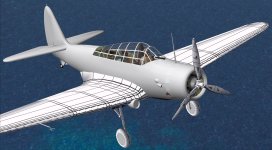
 will have to work.
will have to work. Oh my!
Oh my!
